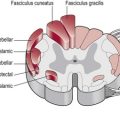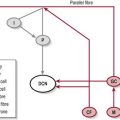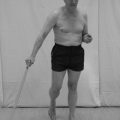Falls
What are falls?
Physical injury
Fracture: In particular the neck of the femur (Hyndman et al. 2002). The incidence of fracture as a result of a fall is between 0.6% and 8.5% (Teasell et al. 2002). In cerebrovascular accident (CVA) the most common fracture is of the hip (45–59%) on the affected side (Dennis et al. 2002).
Soft tissue injuries: Include bruises and open wounds (risk of infection) (Hyndman et al. 2002).
Psychosocial impact
Fear of further falls: Lack of confidence often leads to activity avoidance, greater disability, lack of independence and social isolation (Hyndman et al. 2002; Mackintosh et al. 2005). Activity avoidance also has many secondary consequences which perpetuate the chance of a fall, e.g. reduced exercise tolerance, impaired balance responses, altered body schema, depressed mood and loss of bone mineral density (osteoporosis).
The aim of The National Service Framework for older people (Standard 6 – Falls) (NSF 2001) is to reduce the number of falls which result in serious injury and ensure effective treatment and rehabilitation for those who have fallen. In order to achieve this, preventive intervention and curative rehabilitation are viewed as equally important and therefore an assessment of the relevant risk factors is essential.
Risk factors for falling
The main points will be drawn out here, however for a more comprehensive understanding of this area the reader is referred to the NSF (2001) and The National Institute for Clinical Excellence guidelines for the assessment and treatment of falls in the older person (NICE 2004). Fall-related risk factors for the elderly are generally classified into intrinsic and extrinsic.
Intrinsic
• Mobility problems: Walking speed, balance (Mackintosh et al. 2006), lower limb muscle strength
• Cognitive factors: Poor attention (Anstey et al. 2006), depression
• Impaired vision: Impaired depth perception strongest risk factor for multiple falls (Lord and Dayhew 2001)
• Taking four or more medications
• Osteoporosis (loss of bone mineral density): Increases the risk of fracture
Pathology specific risk factors
CVA
• Various motor dysfunctions: (Yates et al. 2002)
• Altered sensation: (Yates et al. 2002; Soyuer and Ozturk 2007)
• Cognitive deficits: (Stapleton et al. 2001; Yates et al. 2002), including attention deficits (Hyndman and Ashburn 2003) and depressed mood (Ugur et al. 2000)
• Impaired balance: (Stapleton et al. 2001; Teasell et al. 2002)
• More dependency in activities of daily living (ADLs): (Lamb et al. 2003; Hyndman et al. 2003)
Predictive risk factors for falls in CVA
• Fear of falling – Previous falls: Error in perceived stability limits (Takatori et al. 2009)
• Although altered gait and balance are risk factors for falls they are not accurate in terms of predicting falls (Harris et al. 2005)
• ADLs: Patients who are more dependent are more likely to fall (Teasell 2002).
Parkinson’s disease (PD)
• Longer disease duration/an advanced stage of disease (Pickering et al. 2007)
• Postural instability/poor balance (Bloem et al. 2006; Vaugoyeau et al. 2007)
• Difficulty initiating saving reactions (step or upper limb) due to an impairment of anticipatory postural adjustments (King and Horak 2008)
• Freezing of gait (Moore et al. 2007)
• Turning slower and taking more steps than control subjects (Crenna et al. 2007)
• Axial stiffness resulting in loss of intersegmental coordination (Baltadjieva et al. 2006)
• Altered body schema resulting in an overestimate of the limits of stability (Kamata et al. 2007)
• Medication side-effects: Levodopa may cause violent dyskinesias or postural hypotension (Vestergaard et al. 2007)
Why do I need to assess falls?
There is a high incidence of falls in neurologically impaired patients resulting in high economic costs and social problems (Lamb et al. 2003; Harris et al. 2005; Belgen et al. 2006). In Parkinson’s disease, the fall rate for first time fallers is reported as 21% and for multi-fallers 46% (Pickering et al. 2007), with the likelihood of sustaining a fracture increased twofold (Vestergaard et al. 2007). In CVA, in the community setting, 40–73% patients fall within the first 6 months (Hyndman et al. 2003), with the greatest number falling while walking (39–90%) (Hyndman et al. 2002). In the inpatient setting, 14–39% of patients fall (Suzuki et al. 2005; Teasell et al. 2002; Langhorne et al. 2000), with the greatest number falling during transfers (Suzuki et al. 2005).
How do I assess falls?
The NICE (2004) guideline on falls in the older person (>65 years old) recommends that all patients within this criteria be asked routinely whether they have fallen in the past year and then about the frequency, context and characteristics of the fall(s). When the individual reports recurrent falls within the year, the NICE guidance is that they should be offered a multifactorial falls risk assessment which involves a multidisciplinary team approach.
1. Identification of falls history
2. Assessment of gait, balance and mobility, and muscle weakness
3. Assessment of osteoporosis risk
4. Assessment of the older person’s perceived functional ability and fear relating to falling
5. Assessment of visual impairment
6. Assessment of cognitive impairment and neurological examination
The therapist will be involved in providing information for several of these aspects. First, the initial enquiry of ‘have you fallen in the last year?’, with follow-up questioning to ascertain more detailed information related to the falls history. Second, elements of the objective assessment will be valuable to the multifactorial risk assessment, functional assessment (S3.18), gait (S3.19), balance (S3.32), muscle strength (S3.30) and muscle tone (S3.21).
Analysis
Following assessment of any relevant risk factors for falls, the therapist must communicate with the patient’s key worker or whoever is coordinating the multifactorial assessment. Only with all the relevant information can the team identify individuals who are at high risk of falling and implement an appropriate multidisciplinary and multiagency intervention. The Cochrane Library reviews (Cameron et al. 2005; Gillespie et al. 2009) make recommendations for best practice in terms of falls management.
Outcome measures
Clinical
Commonly used outcome measures for falls risk assessment in relation to balance and gait are the Timed up and go test; Turn 180 degrees; Performance-oriented assessment of mobility problems (Tinetti scale); Functional reach; Dynamic gait index; Berg balance scale. However, it is unclear which tool or assessment instrument is the most predictive of future falls (NICE 2004).
As fear of falling is identified as a predictive risk factor and a consequence of a fall, its consideration by all involved with the patient’s care is advised. Two recommended scales are the Activities-specific Balance Confidence (ABC) scale and the Falls Efficacy Scale (Peretz et al. 2006). However, the NICE guidelines (2004) state that simply asking the patient ‘if they are fearful of falling?’ may be as useful as carrying out complex measures.
References
Anstey, KJ, von Sanden, C, Luszcz, MA. An 8-year prospective study of the relationship between cognitive performance and falling in very old adults. Journal of American Geriatrics Society. 2006; 54:1169–1176.
Baltadjieva, R, Giladi, N, Gruendlinger, L, et al. Marked alterations in the gait timing and rhythmicity of patients with de novo Parkinson’s disease. European Journal of Neuroscience. 2006; 24:1815–1820.
Belgen, B, Beninato, M, Sullivan, PE, et al. The association of balance capacity and falls self-efficacy with history of falling in community-dwelling people with chronic stroke. Archives of Physical Medicine and Rehabilitation. 2006; 87:554–561.
Bloem, BR, Grimbergen, YA, van Dijk, JG, et al. The ‘posture second’ strategy: a review of wrong priorities in Parkinson’s disease. Journal of Neurological Sciences. 2006; 248:196–204.
Cameron ID, Murray GR, Gillespie LD, et al: Interventions for preventing falls in older people in residential care facilities and hospitals, Cochrane Database of Systematic Reviews 2005 Issue 3. CD005465, 2005.
Crenna, P, Carpinella, I, Rabuffetti, M, et al. The association between impaired turning and normal straight walking in Parkinson’s disease. Gait Posture. 2007; 26:172–178.
Dennis, MS, Lo, KM, McDowall, M, et al. Fractures after stroke: frequency types and associations. Stroke. 2002; 333:728–734.
Dennison, AC, Noorigian, JV, Robinson, KM, et al. Falling in Parkinson disease: identifying and prioritizing risk factors in recurrent fallers. American Journal of Physical Medicine and Rehabilitation. 2007; 86:621–632.
Gillespie LD, Robertson MC, Gillespie WJ, et al: Interventions for preventing falls in older people living in the community, Cochrane Database of Systematic Reviews Issue 2. CD007146, 2009.
Harris, JE, Eng, JJ, Marigold, DS, et al. Relationship of balance and mobility to fall incidence in people with chronic stroke. Physical therapy. 2005; 852:150–158.
Hyndman, D, Ashburn, A. People with stroke living in the community: attention deficits balance ADL ability and falls. Disability and Rehabilitation. 2003; 25:817–822.
Hyndman, D, Ashburn, A, Stack, E. Fall events among people with stroke living in the community: circumstances of falls and characteristics of fallers. Archives of Physical Medicine and Rehabilitation. 2002; 83:165–170.
Kamata, N, Matsuo, Y, Yoneda, T, et al. Overestimation of stability limits leads to a high frequency of falls in patients with Parkinson’s disease. Clinical Rehabilitation. 2007; 21:357–361.
King, L, Horak, FB. Lateral stepping for postural correction in Parkinson’s disease. Archives of Physical Medicine and Rehabilitation. 2008; 89:492–499.
Lamb, SE, Ferrucci, L, Volapto, S, et al. Women’s Health and Aging Study Risk factors for falling in home-dwelling older women with stroke: The Women’s Health and Aging Study. Stroke. 2003; 342:494–501.
Langhorne, P, Stott, DJ, Robertson, L, et al. Medical complications after stroke. Stroke. 2000; 31:1223–1229.
Lord, SR, Dayhew, J. Visual risk factors for falls. Journal of American Geriatric Society. 2001; 49:508–515.
Mackintosh, SF, Hill, K, Dodd, KJ, et al. Falls and injury prevention should be part of every stroke rehabilitation plan. Clinical Rehabilitation. 2005; 194:441–451.
Mackintosh, SF, Hill, KD, Dodd, KJ, et al. Balance score and a history of falls in hospital predict recurrent falls in the 6 months following stroke rehabilitation. Archives of Physical Medicine and Rehabilitation. 2006; 87:1583–1589.
Moore, O, Peretz, C, Giladi, N. Freezing of gait affects quality of life of people with Parkinson’s disease beyond its relationships with mobility and gait. Movement Disorders. 2007; 22:2192–2195.
NICE. National Institute for Clinical Excellence guidelines for the assessment and treatment of falls in the older person. www.nice.org.uk/nicemedia/pdf/CG021fullguidelinepdf, 2004.
NSF. National Service Framework for older people, Standard 6. www.dhgov.uk/prod_consum_dh/groups/dh_digitalassets/@dh/@en/documents/digitalasset/dh_4071283pdf, 2001.
Peretz, C, Herman, T, Hausdorff, JM, et al. Assessing fear of falling: can a short version of the activities-specific balance confidence scale be useful? Movement Disorders. 2006; 21:2101–2105.
Pickering, RM, Grimbergen, YA, Rigney, U, et al. A meta-analysis of six prospective studies of falling in Parkinson’s disease. Movement Disorders. 2007; 22:1892–1900.
Soyuer, F, Ozturk, A. The effect of spasticity sense and walking aids in falls of people after chronic stroke. Disability Rehabilitation. 2007; 299:679–687.
Stapleton, T, Ashburn, A, Stack, E. A pilot study of attention deficits balance control and falls in the subacute stage following stroke. Clinical Rehabilitation. 2001; 154:437–444.
Suzuki, T, Sonoda, S, Misawa, K. Incidence and consequence of falls in inpatient rehabilitation of stroke patients. Experimental Aging Research. 2005; 31:457–469.
Takatori, K, Okada, Y, Shomoto, K, et al. Does assessing error in perceiving postural limits by testing functional reach predict likelihood of falls in hospitalized stroke patients? Clinical Rehabilitation. 2009; 23:568–575.
Teasell, R, McRae, M, Foley, N, et al. The incidence and consequences of falls in stroke patients during inpatient rehabilitation: factors associated with high risk. Archives of Physical Medicine and Rehabilitation. 2002; 833:329–333.
Ugur, C, Gucuyener, D, Uzuner, N, et al. Characteristics of falling in patients with stroke. Journal of Neurology Neurosurgery and Psychiatry. 2000; 69:649–651.
Vaugoyeau, M, Viel, S, Assaiante, C, et al. Impaired vertical postural control and proprioceptive integration deficits in Parkinson’s disease. Neuroscience. 2007; 146:852–863.
Vestergaard, P, Rejnmark, L, Mosekilde, L. Fracture risk associated with parkinsonism and anti-Parkinson drugs. Calcified Tissue International. 2007; 81:153–161.
Williams, DR, Watt, HC, Lees, AJ. Predictors of falls and fractures in bradykinetic rigid syndromes: a retrospective study. Journal of Neurology Neurosurgery and Psychiatry. 2006; 77:468–473.
Yates, JS, Lai, SM, Duncan, PW, et al. Falls in community dwelling stroke survivors: an accumulated impairments model. Journal of Rehabilitation Research and Development. 2002; 385–394.





